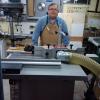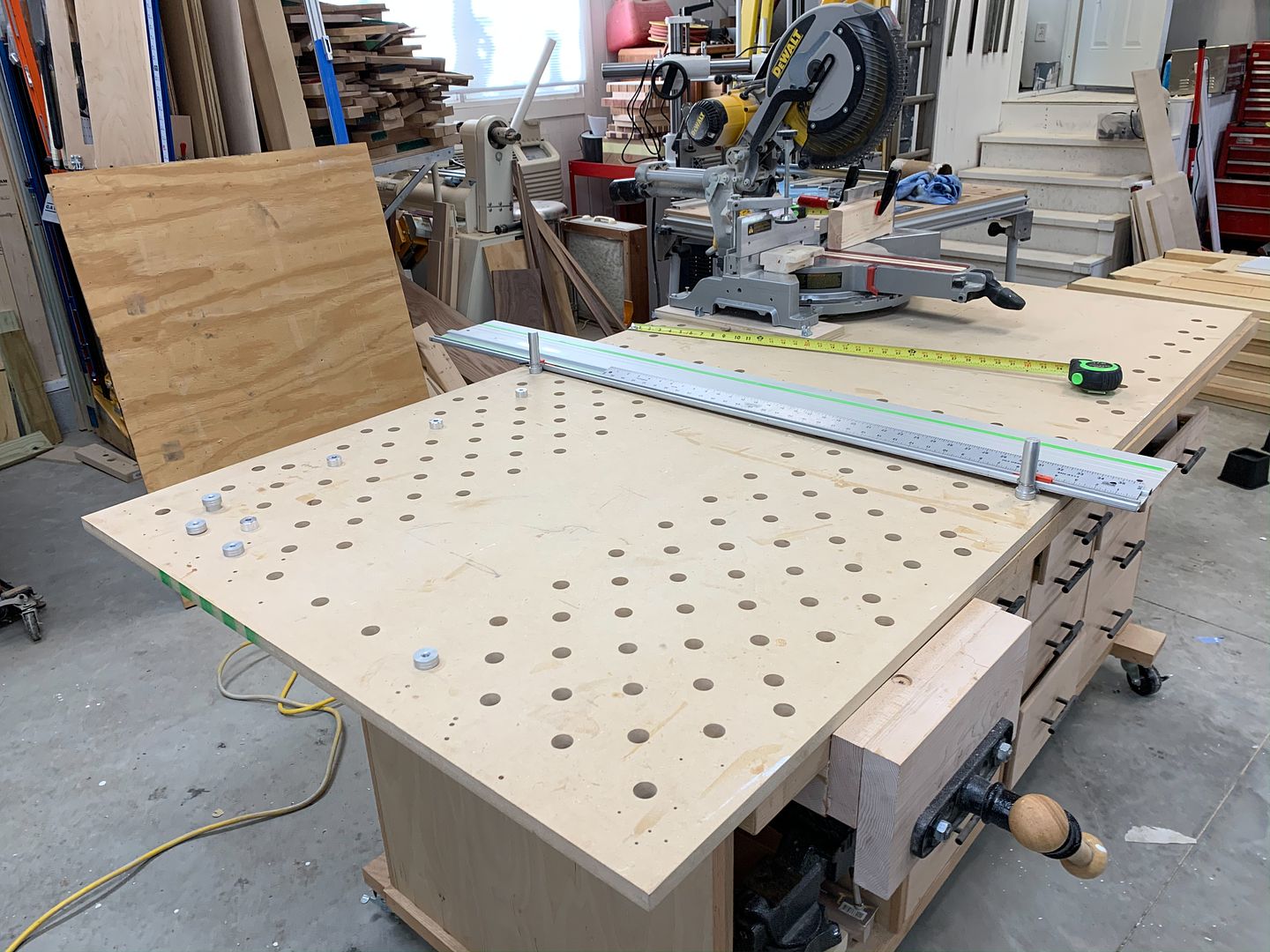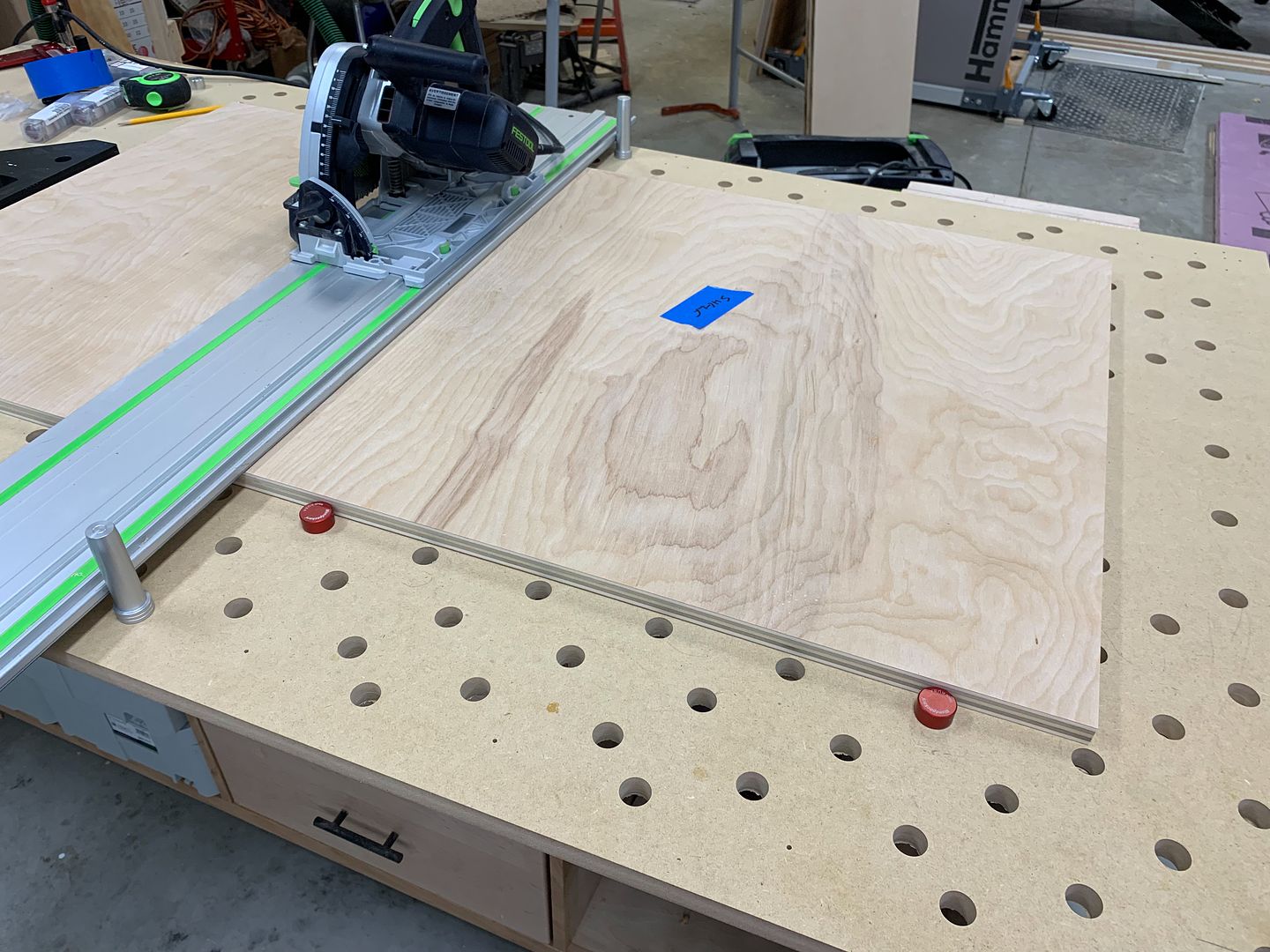I have a medical condition that hinders my ability to much hand tool work so I sold my big workbench. I need to replace it with another flat surface where I can still clamp workpieces but it doesn’t need to be as large, heavy or have the traditional vices. I started investigating MFT style workbenches by reading forums and watching videos but still have a few questions.
Most of the designs seem to have a single sheet of MDF for top surface with the 20mm holes in a 96mm grid. What are the disadvantages of using baltic birch plywood instead of MDF for top?
To allow for using the 20mm holes for clamping the top on these style benches is elevated from the subtop. How much space has to be under the top to allow for the insertion of clamps into the holes?
With a single sheet of MDF or plywood for the top there needs to be a support structure that doesn’t interfere with the use of the 20mm holes. I assume that the layout for the holes has to be done in advance of the supports so that it doesn’t get in the way. Any suggestions for the design of the support structure?
As always, thanks for your suggestions.




 Reply With Quote
Reply With Quote






